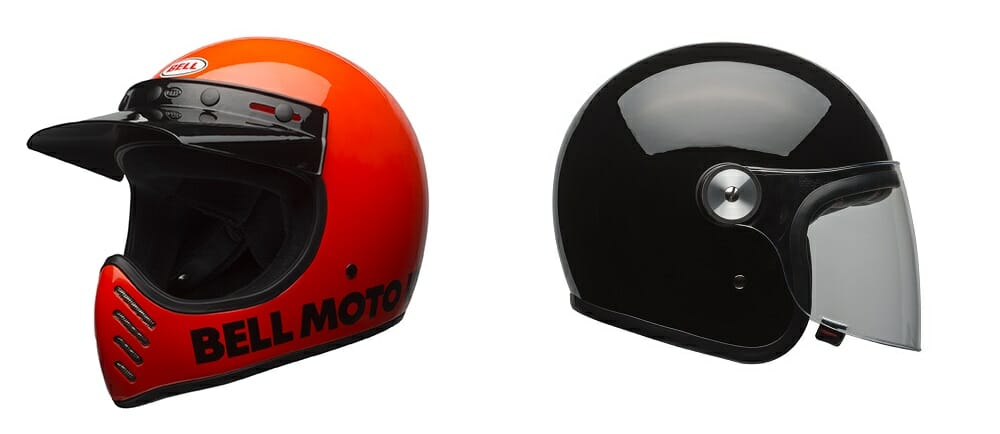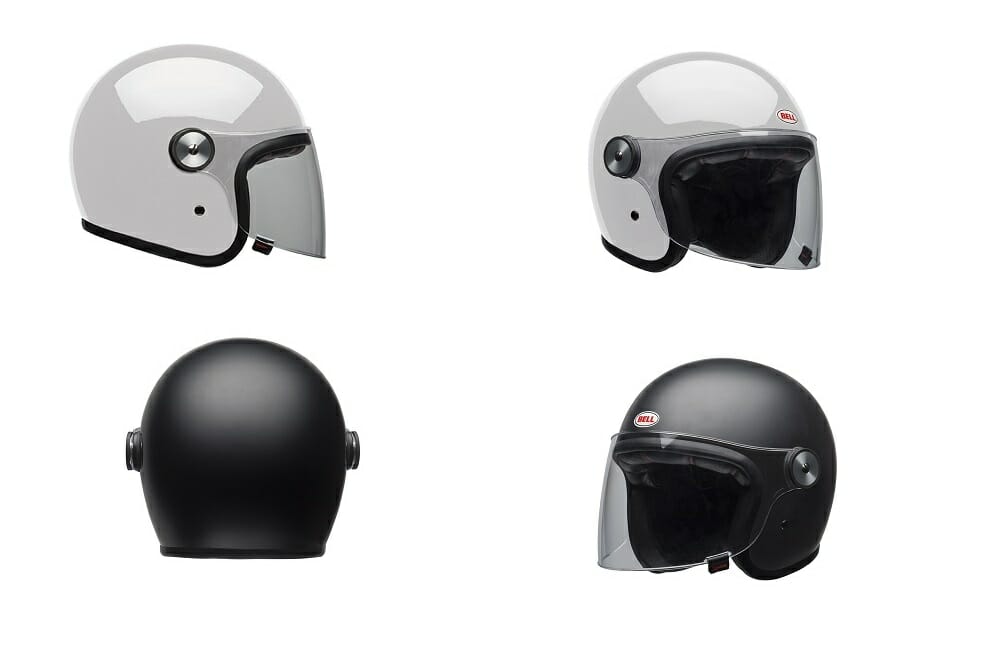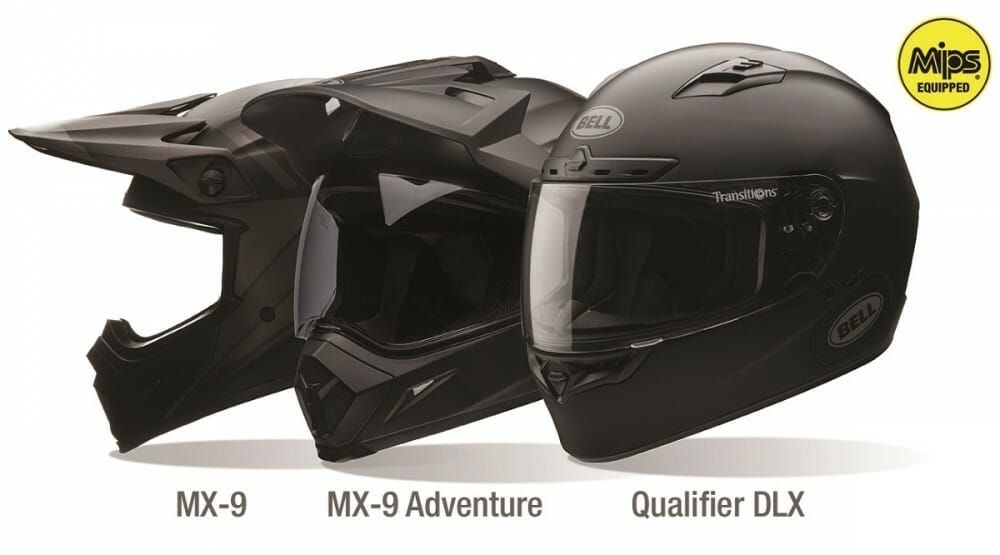Cycle News Staff | October 10, 2016
Bell Helmets is going back to its roots for 2017, with retro looks for the Moto-3 and Riot helmets. Also, Bell is adding MIPS technology to three of its helmets., including the street Qualifier DLX.
 The Moto-3 (left) and the Riot (right) have classic Bell style and shape, but with modern safety features.
The Moto-3 (left) and the Riot (right) have classic Bell style and shape, but with modern safety features.
The Moto-3 first debuted in the late 1970s and was worn by top racers such as Bob Hannah. The original helmet was well ahead of its time with a Snell certification, and became the inspiration for a number of motocross helmets that followed.
The shell of the modern-day Moto-3 is made from Bell’s proprietary fiber composite and also has a multi-density EPS layer. The off-road Moto-3 helmet has Bell’s recognizable slanted vents and a snap-on visor. Instead of a terry cloth interior, it has a modern antimicrobial/antibacterial liner that’s removable and washable.
The graphics are taken from Bell’s “Artist Series,” which are done by iconic brands such as RSD, Chemical Candy and Independent (which will include a leather, suede interior).
“The Moto-3 is one of our most iconic helmets, and we are excited to re-introduce it to our lineup and share it with a whole new generation of riders,” said Chris Sackett, vice president of Bell Helmets. “Many riders have started looking back to old models, and this helmet will give them the classic look and feel they are searching for with all the modern innovations.”

Moto-3
MSRP: $349.95
Certifications: DOT/ECE
Sizes: XS, S, M, L, XL, XXL

The Riot is a three-quarter street helmet that is based upon Bell’s Custom 500 design, which pays homage to the original 1950s 500-TX and the 1970s Magnum.
The 500-TX came out in 1956 and Bell says it was the first helmet with a composite shell and EPS liner. It was upgraded to the Magnum in the mid-1970s and then refined into the Custom 500 several decades later.
“We take pride in maintaining the authentic, originally styling that Roy Richter created back in the 1950s,” Sackett explained. “The Riot is a tremendous example of our commitment to our roots, but with an upgraded take to ensure riders are equipped with modern safety standards.”
Technologies:
- Low-profile composite shell
- 5 shell and EPS liner sizes
- Antibacterial interior
- Multi-density EPS liner
- Padded chin strap with D-ring closure and strap keeper
- NutraFog™ anti-fog, anti-scratch and UV-protected shield
- Aluminum shield mounting hardware
- $199.95
- Certifications: DOT/ECE 22.05
- Sizes: XS, S, M, L, XL, XXL

Qualifier DLX Marks First Street Helmet to Offer MIPS Rotational Impact
The third announcement from Bell is that MIPS, or Multi-Directional Impact Protection System, will be used in the MX-9, MX-9 Adventure and Qualifier DLX helmets. The Qualifier DLX marks the first time that MIPS will be available within a street motorcycle helmet.
The technology manages energy from rotational and angular impacts.
“It’s our belief that ‘high tech’ doesn’t have to equate to ‘high price,’ and we’re demonstrating that by bringing MIPS technology to these helmets,” said Chris Sackett, Vice President of Bell Helmets. “We have led the charge for safety technology for 60 years, and our mission continues to be one of providing high-quality safety features to riders at every level.”
MIPS uses a slip-plane system that moves inside the helmet, mimicking the brain’s own protection system. This low-friction layer under the impact liner is designed to rotate inside the helmet with the intent to potentially slow or reduce the amount of energy transferred to or from the head. The MIPS liner is connected to the outer liner by four elastomeric bands that provide 10-15 millimeters of movement in all directions.
When a head rotates quickly and comes to a sudden stop, the rotational acceleration can cause the brain tissue to experience high levels of strain. The stretching of the tissue that can be caused by these motions can result in various types of brain injury. MIPS addresses this strain by allowing the head to slide independent of the helmet during the most critical milliseconds of impact. The slide that occurs during that critical moment of time helps to reduce the violence to the brain inside the skull, and can significantly reduce the risk of traumatic brain injury.
Check out the following video about the MIPS technology:
For more information on Bell’s new helmets and technology, please visit www.bellhelmets.com